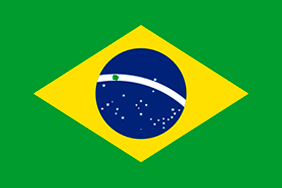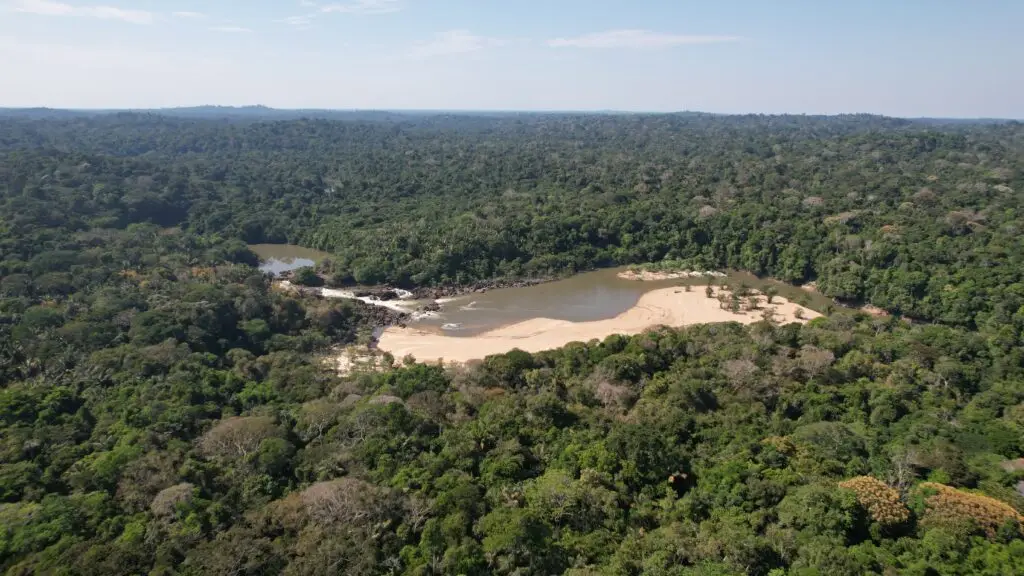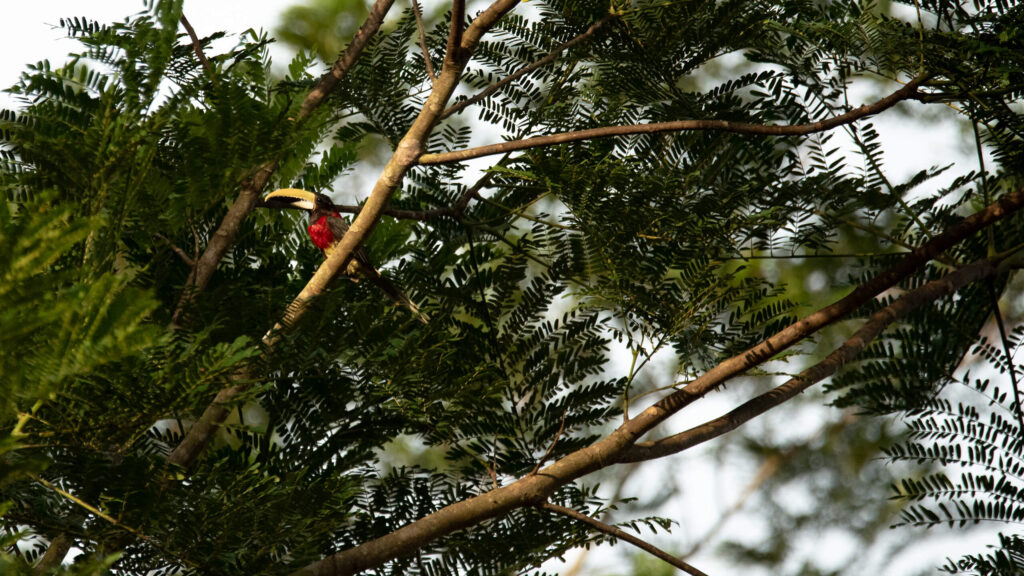Author Marcos Siqueira-Neto, Specialist in Agriculture Carbon Projects
Today (12/05) we celebrate World Soil Day, on this date we must remember the profound importance of this resource for life on Earth. Soil is essential for all forms of life; it is the true foundation of the planet. It supports vast forests or small urban gardens; in different environments and landscapes it is essential for the ecosystems and human well-being.

Soil: More Than Just a Surface Layer
Although “land” and “soil” are often used as synonyms, they have distinct meanings: According to the Food and Agriculture Organization of the United Nations (FAO)[1], land represents the territory, the solid mass or the physical portion that makes up the planet’s crust, with its rocks, minerals and other layers that physically support us.
Soil is much more than a surface, it is an active layer, result of natural processes of rocks transformation, called weathering. This process is influenced by climate, relief, source material (elements and minerals in rocks), organisms’ activity and time. The complex combination of minerals, organic matter, air, water and living organisms gives characteristics that differentiate soil types. Soil can also take on different meanings, depending on perspective:
- Geologist: soil is the product of millions of years of geological processes of decomposition and sedimentation. It represents the layer resulting from the physical, chemical and biological interaction between rocks, climate and organisms, which connects the Earth’s crust with life on the surface.[2].
- Agronomist: soil is a work tool, a living and productive resource, where seeds become crops, and harvests generate food and wealth. It provides nutrients, water and support for plant cultivation, and which must be conserved to ensure the sustainability of agricultural production.
- Ecologist: soil is much more than a layer of mineral and organic material; it is an ecosystem. A matrix that houses enormous biodiversity, and a regulator of ecological processes that recycles nutrients, stores water and filters contaminants, in addition to contributing to climate regulation, especially through carbon sequestration.
- Artist: soil is a sacred tissue, the Earth’s womb, a place of mystery and fertility. It is the guardian of stories, where seeds flourish, giving rise to man himself, a symbol of growth, belonging and rebirth.
Brazilian Soil Classes
Brazil has a vast territorial extension and has a great diversity of soil. Among the main Soil Classes, we can highlight:
- Latosols cover about 39% of the territory, with extensive areas in the Amazon and Cerrado. These are deep, well-drained soils, mostly with low natural fertility, and occur in areas of slight slope, in flat to undulating relief. They are highly suitable for agricultural use, are favorable to mechanization, and can be highly productive with adequate management.
- Argisols occupy about 24% of the territory and are common in the South and Southeast regions. These soils have a clayey texture in the subsurface and a medium texture on the surface. When this textural gradient is accentuated, this soil becomes more susceptible to erosion, requiring conservationist management practices.
- Neossolos, which are found in 13% of the territory, are poorly developed soils, with a thin surface layer that is conditioned by their organic matter content. These soils are considered to have low agricultural suitability, as they have low water and nutrient retention. Management practices that maintain or increase the organic matter content can reduce this problem.
Other classes with lower occurrence include: Plinthosols[6] (6% of the Brazilian territory); Gleissolos[7] (4%); Luvisols[8] (3%); Cambisols[9] (2,5%); Spodosols[10] (2%); Planossolos[11] (2%); Vertisols[12] (2%); Nitosols[13] (1,5%); Chernosols[14] (0,5%); and Organosols[15] (dispersed occurrence).
Each soil class has characteristics that influence its use and management. In Brazil, zoning and land use suitability have their own legislation, which aims to align urban and rural development with environmental preservation and sustainability, ensuring conscious use of ecosystem services and the carrying capacity of each soil type.

Soil Map of Brazil
Source: https://www.embrapa.br/tema-solos-brasileiros/solos-do-brasil

Agricultural Use Potential Map
Source: https://www.aen.pr.gov.br/sites/default/arquivos_restritos/files/documento/2022-12/0512mapa.pdf
Ecosystem Services and Land Use
Soil is one of the main providers of ecosystem services, which are fundamental to human health and well-being. Among many, we can highlight soil as the support for the establishment of buildings and agricultural crops; the biogeochemical cycle of nutrients and carbon, the production of food, materials and bioenergy; source of minerals; purification and regulation of the water cycle; climate regulation; habitat for a vast diversity of organisms; and its value as landscape, recreation, cultural and spiritual resources. Given so many ecosystem services, it is correct to state that soil is a valuable economic resource.
Agriculture is a sector of great economic importance, generating jobs, income and exports. Thus, the appropriate use of soil through sustainable management practices ensures soil health, and its conservation generates economic value. On the other hand, intensive use without care causes the degradation of physical, chemical and biological attributes, leading to soil depletion and, consequently, the loss of productive capacity. Therefore, it is necessary to find a balance so that productive activity contributes to the economy without compromising soil health.
In addition, soil stores carbon in the form of organic matter, reducing carbon emissions for the atmosphere. When the soil is well managed, its organic matter is preserved and mitigates climate change. However, inadequate agricultural practices and deforestation can release stored carbon back into the atmosphere, contributing to global warming.

Soil Ecosystem Services
Source: https://openknowledge.fao.org/server/api/core/bitstreams/eaecf793-d0cb-4ac4-a4fc-b98dbe0065f0/content
Suitable Soil Management is a Nature-Based Solution
Soil is the largest terrestrial carbon reservoir, storing three times more carbon than the atmosphere and vegetation combined[16]. As such, it plays a central role in mitigating climate change and its proper management is considered a powerful Nature-Based Solution (NBS).
The conscious use of this resource as an NBS is associated with the adoption of management practices that aim to improve soil health[17], with an increase in organic matter, ensuring the sustainability of agricultural production. The adoption of conservation management practices that reduce surface layer movement and include permanent soil cover maximize carbon sequestration and increase its resilience.[18].
In this sense, we recommend management techniques such as no-tillage, crop rotation, organic/green fertilizer, and the adoption of integrated systems (e.g., crop-livestock-forestry) and/or agroforestry that enrich soil, promote carbon sequestration, and reduce atmospheric CO₂ while also favoring agricultural production[19]. In addition, the restoration of degraded soils, especially in pastures, is also a powerful strategy for capturing carbon, while restoring biodiversity and productivity[20], and with an indirect “forest-saving” effect.
Among the challenges we see is that the lack of standardized methodologies and the high cost of measuring and monitoring carbon in the soil make it difficult to implement initiatives such as agricultural carbon credits. Even so, new technologies for soil analysis are being developed to facilitate this process. We believe that a regulatory framework and adequate incentives, such as carbon credits and payments for environmental services, can encourage rural producers to promote soil as a strategic ally in climate mitigation, in addition to promoting food and economic security.[21].

Soil aggregate filled with organic material
Source: https://brasil.mapbiomas.org/wp-content/uploads/sites/4/2023/08/MapBiomas_Solo_JUNHO_2023_21.06_OK_Alta__1_.pdf
Final Considerations
Soil conservation is essential for food security and for maintaining ecosystems. Brazil, with its vast expanse and diversity of soils, has a strategic role in promoting sustainable agricultural practices, also taking advantage of the carbon credit market and payments for environmental services to offset conservation costs.
Ambipar Environment develops NBS projects that advocate the conscious use of this valuable resource through the adoption of sustainable management practices that aim to improve soil health and generate carbon credits. To this end, we use the best certification methodologies and standards available on the market, which ensure the generation of positive impacts on the climate, society and the environment. Therefore, on this World Soil Day it is worth reflecting on the use and conservation of our soils, and we invite everyone to value and protect this vital resource for our future and that of the planet.

Map promotes more sustainable soil with programs for land management
Source: https://www.gov.br/agricultura/pt-br/assuntos/noticias/mapa-impulsiona-solo-mais-sustentavel-com-programas-para-o-manejo-da-terra
Do you have any questions or want to discuss the topic further?
Our team has highly experienced technical professionals
who are fully available to provide additional explanations.
[1] FAO (2021). The State of the World’s Land and Water Resources for Food and Agriculture – Systems at breaking point. Synthesis report 2021. Rome. DOI: 10.4060/cb7654en.
Birkeland, P.W. (1999). Soils and Geomorphology. New York: Oxford University Press. p. 430.
[3] Brady, N.C., & Weil, R.R. (2010). Elements of the Nature and Properties of Soils. Pearson. 614p.
[4] Wall, D. H., et al. [eds.] (2012). Soil Ecology and Ecosystem Services. New York: Oxford University Press, p. 424. DOI:10.1093/acprof:oso/9780199575923.001.0001.
[5] Plinthosols are found in flat and gently undulating relief, in depressed areas, alluvial plains, and situations involving slow water drainage from the soil. They are characterized by imperfect drainage and cycles of iron reduction and oxidation with the formation of plinthite and/or petroplinthite (concretion). These soils are poor in organic matter, frequently acidic, and have low natural fertility.
[6] Gleisosols are found in areas with drainage restrictions, such as near watercourses, floodplains, and lowlands. They are formed by clayey or very clayey material in a water-saturated environment, poorly drained (hydromorphic).
[7] Luvissols are found in the Northeast, distributed in the semi-arid zone. These are shallow soils with high natural fertility, characterized by a significant increase in clay content in subsurface horizons.
[8] Cambissols have wide distribution across all biomes. These are moderately developed soils, shallow, with wide variation in chemical and granulometric composition.
[9] Spodosols are typical of coastal zones, sandy, with organic matter deposits at depth, very acidic, and poor in nutrients.
[10] Planosols have a well-developed surface layer and a compacted, poorly drained subsurface layer.
[11] Vertisols are predominant in the northeastern semi-arid region. These clayey soils have a high water retention capacity but are prone to cracking in dry periods.
[12] Nitossols are deep soils with clayey or very clayey texture, well-drained, moderately acidic, and of variable natural fertility.
[13] Chernozems are highly fertile, characterized by a thick, dark surface layer with high organic matter content.
[14] Organosols are formed by high organic matter content, derived from the deposition and accumulation of plant residues, with or without mixing of mineral materials. They occur very sporadically, not constituting representative areas in Brazil.
[15] EMBRAPA. (2018). Sistema Brasileiro de Classificação de Solos − Brasília, DF: Embrapa, 2018. 356 p.
[16] IPCC (2019). Climate Change and Land: An IPCC Special Report on Climate Change, Desertification, Land Degradation, Sustainable Land Management, Food Security, and Greenhouse Gas Fluxes in Terrestrial Ecosystems. Intergovernmental Panel on Climate Change.
[17] Canisares, L.P., et al. (2024). Enhancing Soil Health in Brazilian Agroecosystems: Indicators and Management Practices. In: Ogwu, M.C., et al. [eds] Sustainable Soil Systems in Global South. Singapore: Springer, p. 768. DOI: 10.1007/978-981-97-5276-8_23.
[18] Siqueira-Neto M., et al. (2020). Impacts of Land Use and Cropland Management on Soil Organic Matter and Greenhouse Gas Emissions in the Brazilian Cerrado. Eur. J. Soil Sci. p. 1–16. DOI:10.1111/ejss.13059.
[19] Lal, R. (2004). Soil Carbon Sequestration Impacts on Global Climate Change and Food Security. Science, 304(5677), 1623–1627. DOI: 10.1126/science.1097396.
[20] UNEP (2019). The Global Environmental Outlook: GEO-6. Healthy Planet, Healthy People. Nairobi. DOI: 10.1017/9781108627146.






